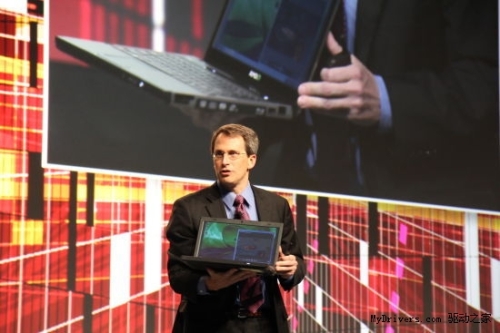Brighter Battery Factory , http://www.china-battery-manufacturers.com AMD held its first Fusion Developer Summit in Bellevue, Washington, United States last week. This is the first time AMD has held a global developer conference. The meeting lasted for three days, and more than 700 developers from global scientific institutions and IT companies registered for the conference.
AMD held its first Fusion Developer Summit in Bellevue, Washington, United States last week. This is the first time AMD has held a global developer conference. The meeting lasted for three days, and more than 700 developers from global scientific institutions and IT companies registered for the conference.
During the conference, AMD senior vice president Rick Bergman accepted media interviews with Greater China including Sina Technology. It is reported that AMD has released the 2011 HD Tablet PC platform based on the AMD Z-series APU at this year's Taipei Computer Show. Bergman revealed that AMD APU (Accelerated Processor) is very suitable for flat panel, low power design, and OpenCL support, but he stressed that AMD has no plans to enter the smart phone market. Bergman also stated that China is the key market for the AMD Fusion strategy and that AMD is making Beijing the second largest business center in the world.
Earlier this year, Apple MacBook Pro notebooks used AMD's Radeon discrete graphics, replacing the original NVIDIA graphics card. Bergman stated in this regard that AMD is pleased to be a supplier of Apple notebook graphics cards. Radeon discrete graphics cards have outstanding performance in graphics processing and have excellent performance in terms of energy consumption performance, graphics processing, and multimedia.
IDG analysts had previously questioned that AMD Fusion APU may be superior in graphics processing capabilities compared to Intel Sandy Bridge chips that also integrate graphics processing functions, but its CPU performance is still slightly inferior to that of Intel chips. When the reporter asked questions on this issue, Bergman stated that AMD pays attention to the user's final application experience, and the advantages of supporting the DX11 display standard provide APU products with strong support and can meet various needs of users, especially multimedia functions.
AMD held its first developer conference this time to attract more developers to program the APU. Talking about this issue, Bergman stated that AMD will attract developers through four major initiatives: first, comply with open standards and create an open ecological environment; secondly, promote the development of OpenCL and provide developers with development tools; Develop a clear roadmap for programmers that does not need to distinguish between GPU and CPU programming. Fourth, organize more developer activities to allow more developers to understand and participate in APU programming activities.
AMD APU's heterogeneous computing performance is suitable for low-power flat panel, and ARM currently occupy an important position in the field of smart phone chips, so the outside world has been speculating whether AMD will cooperate with ARM. It is worth noting that Jem Davies, vice president of ARM technology, participated in the developer conference and delivered a speech.
Bergman said that APU's low-power high-performance design is indeed very suitable for flat-panel, and is based on the OpenCL open standards, but it is not convenient to disclose the issue of cooperation with ARM, Davis's speech is limited to technical aspects.
Bergman further pointed out that the CPU of the X86 architecture is not necessarily higher than the power consumption of the ARM architecture. The APU can also provide good performance to the tablet users. The entire APU platform plus the Southbridge can reach 10 watts or less. AMD will next develop APUs for tablet platforms because the power consumption is so low that it can also be called a "fanless notebook" APU. However, he stressed that AMD has no plans to enter the smart phone chip market.
Data shows that since AMD introduced APU technology earlier this year, 1.5 million notebooks have already adopted this chip. When asked about the future market share of APU chips, Bergman stated that the company will not make predictions about future market share, but AMD is satisfied with the current shipment status of APU chips.
Speaking of China's market strategy, Bergman stated that AMD's Shanghai R&D Center has played an important role in the development of APU's products and software. At the same time, according to the cooperation memorandum between AMD and the Beijing Municipal Government in October last year, Greater China Headquarters Beijing It will become AMD's second largest business center in the world. AMD also plans to further promote the deployment and development of cloud computing in China.